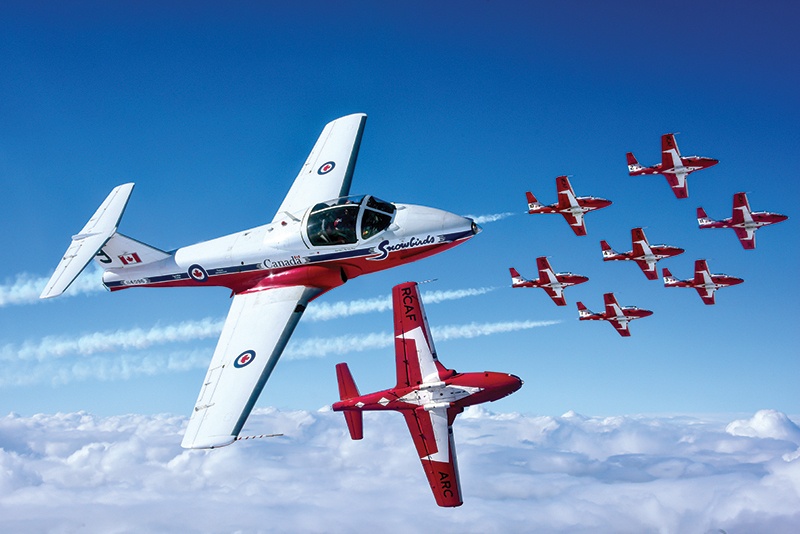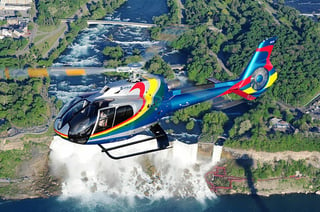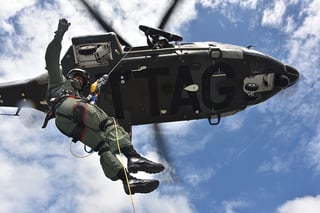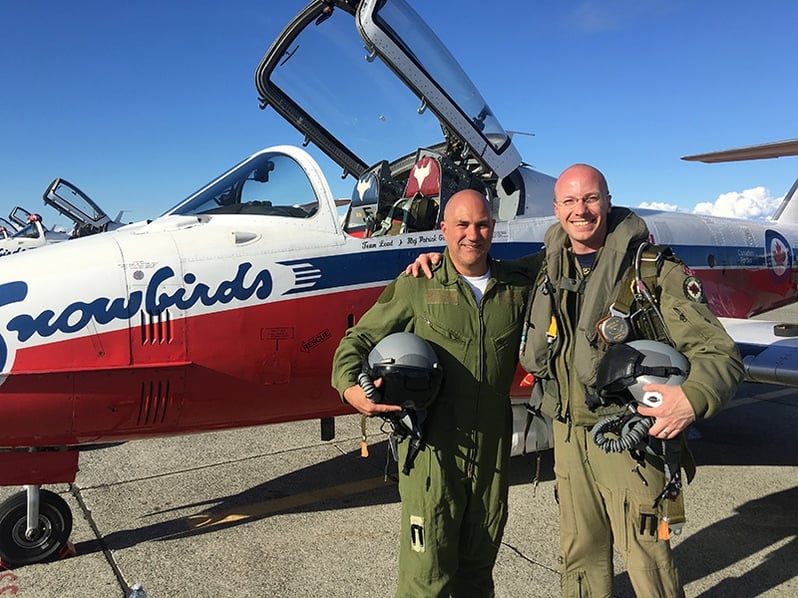
As part of our September focus on photography, BDN Partner Kyle Davis recently had the pleasure of speaking with Mike Reyno, group publisher of Vertical, Vertical 911, Skies, Insight, and RCAF Today magazines about the art and science of aviation photography.
Mike is an accomplished photographer who has been involved in the aviation publishing industry since the early ‘90s. His experience and in-depth knowledge of aviation is the foundation that MHM Publishing’s successful portfolio of magazines has been built upon. Mike has flown in over 80 aircraft types, and has accumulated over 1,000 hours photographing aircraft air-to-air. This is part two of a two-part series; part one appeared here Sept. 12. All photos courtesy of Mike Reyno.
Your magazines are known for their exceptional photography. What do you look for in the photographers who shoot for you and in the photos you choose for the publication?
MR: I always look for what’s different or what’s unique about the way a photographer takes images. Last year our photo contest winner was a search and rescue technician with the U.S. Navy. He shot a photo while he was at the end of a hoist in an ice crevice near Whidbey Island in Washington — where he was looking up to a helicopter hovering overhead. It was fantastic! We love to see different angles, different perspectives, different backgrounds — as long as it’s done safely — it makes all the difference in what we choose.
Can you talk about shooting helicopters versus fixed-wing?

MR: The challenges that come with a helicopter is that you’ve got spinning rotors and vibrations and wind coming into an open doorway. With fixed wing, the challenge is that you know the background you want, but it’s hard to make it happen when you’re flying by at 300 knots. I did a photo shoot with the Breitling Jet Team that was touring the U.S. and Canada two years ago and we had four quick fly-bys over Niagara Falls, and that was it. I got the shot, but it’s tough because if you don’t get it…you know it’s a lot of money, and that’s the other thing. Doing air-to-air is a huge expense — from $600 to $7,000 an hour for an R44 or an S92, to $40,000 for an F-18. So you better come back with the shot. 
What’s the most you’ve ever seen someone spend on a photo shoot?
MR: Around $100,000, just for the aircraft time alone.
KD: Wow.
MR: Yeah. It’s big, big bucks, and you’ve got to make sure that the photographer you’re using can do all those things that we just spoke about.
Last week you talked about the new generation of young photographers who are doing great work. What about some of the more established people?
MR: Ted Carlson, Eric Dumigan, Dan Megna, Heath Moffatt, Jamie Hunter, and Skip Robinson come to mind. Also, Rich Cooper and Ned Dawson are really talented. Paul Bowen is in a class of his own on the business aviation side. And the ultimate photographer would be Katsuhiko Tokunaga, who just dominates mostly with military stuff. Paul and Katsuhiko are probably the two biggest names in aviation photography. They both demonstrate the ultimate as far as professionalism and they are two of the nicest guys you’d ever hope to meet.
So you’ve been involved in a lot of photo shoots, including air-to-air as we’ve discussed. Have any been especially memorable or interesting, and have you had any close calls?
MR: Yes, but it wasn’t a close call; we actually hit in midair. It was in 2001 and I was flying with the Snowbirds at the London Air Show. It was a media day and I was actually not even taking photos when we had the problem. The photo shoot went well, but there was miscommunication between two pilots during a rejoin and we basically met head-to-head. We took off his tail with our wing and he took off a big chunk of our leading edge. So we’re over Lake Erie, the crew in the other airplane had to punch out, and then for probably ten minutes we weren’t sure if we’d have to punch out as well. We didn’t know if we could make it back, but ultimately we did and the guys who ejected were all OK, too. I think it took about a month and a half before I would get back in an aircraft but — knock on wood — that’s the only time I’ve ever had an incident and I’ve never had a close call since. Safety is everything. At the end of the day, it’s only a photo.
Tell us about some of your other most memorable flights.
MR: Some of the more interesting ones I think have been where I get out into the bush. So, if I go to Airbus and I do a photograph of an H125, that’s one thing. But then I go out into field and I see how they put that helicopter to work. The best part of what I do is bringing that to the reader. I can show them the utility of taking one helicopter type, like an H125, and that helicopter probably does 20 different things.
So it’s one thing to see it at the manufacturer, but to go out into the field to show what they’re doing out there, every one of those is memorable because it’s something that’s always unique and often amazing.

What about any parting shots or wisdom? Are there any topics you’d like to talk about that we haven’t covered?
MR: Sure. Too many people in the industry don’t understand the value of aviation photography and, frankly, they don’t want to pay for it. But a lot goes into every photo. First, I had to fly there to shoot it. I also had to have the knowledge base to brief it so we could do everything safely, but, you know, there is a risk element that comes with this work. There’s the creative and technical talent. So you try to factor that in to what you’re asking for the photos. Still, I’d say 90 percent of people just don’t understand the value that goes with it. They think you just went up in the airplane and clicked. The other thing that I’ve talked about a couple of times is the safety element, so we’re careful about what we show in our magazines. We don’t want selfie sticks out the windows and things like that. We’ve seen a lot of videos and photos of helicopter accidents or helicopters doing some pretty stupid things and that can create a perception outside of our industry that is not what we want. This isn’t the wild, wild west. We’ve got to be safe.
Thanks for being with us for this series on the art and science of aviation photography. If you liked this interview, you may also be interested in last week’s interview with Mike Reyno, or this blog, “Why Paying for Photography Rights Matters,” and the all-new “
 ,” available for download now.
,” available for download now.
